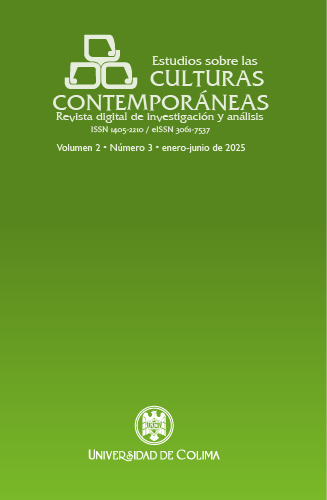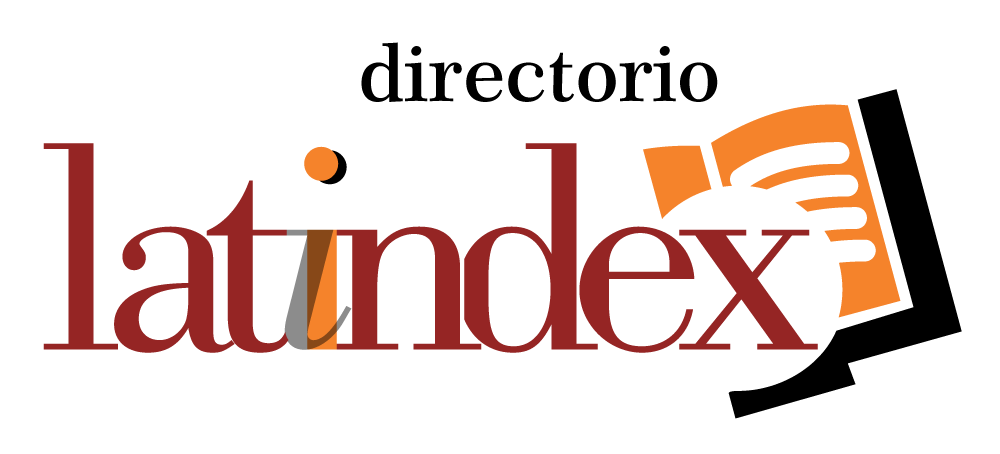Representation and voids about college students in three Mexican newspapers of national reach
DOI:
https://doi.org/10.53897/RevESCC.2025.3.02Keywords:
Content analysis, university students, youth, written press, newsmakingAbstract
The press exerts a notable influence on social interactions by shaping social reality through the constant exchange of ideas, concepts and beliefs. Berger and Luckmann’s theory of social construction of reality (1968/2003) is applied to analyze the contents about university students published by three national Mexican newspapers (La Jornada, Milenio and El Universal), aiming to understand who talks about these young people, from what perspectives they do it and what are the themes, practices and actions emphasized. A content analysis was carried out, collecting 103 news stories published from 2018 to 2022. It stands out that the labels most used to talk about these young people are “students”, “actors for development”, “activists” and “young people of excellence”. Furthermore, only 6% of the stories gave these college students the chance to talk about themselves. Examination of the corpus revealed a worrying picture of limited and limiting discourses; thus, underscoring the need for a more accurate and responsible media representation of this group. It is urgent to identify and understand journalistic discourses, given the crucial influence of the press in the formation of perceptions and the construction of social reality.
Downloads
Metrics
References
Ávalos González, G. (2016). Activismo político contemporáneo: Acción colectiva, jóvenes y tecnologías comunicativas en Guadalajara [Tesis de maestría]. Universidad de Guadalajara. https://www.riudg.udg.mx/visor/pdfjs/viewer.jsp?in=j&pdf=20.500.12104/81438/1/MCUCSH10075FT.pdf
Arnett, J. J. (2021). Emerging adulthood: The winding road from the late teens through the twenties. Oxford University Press.
Berger, P. L., y Luckmann, T. (2003). La construcción social de la realidad (S. Zuleta, Trad.). Amorrortu editores. (Obra original publicada en 1968).
Bowers, A. J., Woolf, H., y Thorp, J. (2023). Representing youth: Media narratives and social realities. Routledge.
Castañeda, J. (2019). Discurso, poder y sociedad: Reflexiones desde Iberoamérica. Ediciones Iberoamericanas.
Dimock, M. (2019). Defining generations: Where Millennials end and Generation Z begins. Pew Research Center. https://pewrsr.ch/2szqtJz
Duarte Quapper, C. (2000). ¿Juventud o Juventudes?: Acerca de cómo mirar y remirar a las juventudes de nuestro continente. Ultima década, 8(13), 59-77. https://dx.doi.org/10.4067/S0718-22362000000200004
Duarte Quapper, C. (2012). Sociedades adultocéntricas: Sobre sus orígenes y reproducción. Revista Última Década, 20(36), 99-125. https://doi.org/10.4067/S0718-22362012000100005
Fernández, A. (2022). Comunicación y representaciones sociales: Una perspectiva Iberoamericana. Editorial Académica Española.
Filardo, V. (2018). Juventud, juventudes, jóvenes: Esas palabras. Revista Última Década, 26(50). http://dx.doi.org/10.4067/S0718-22362018000300109
Gómez, R. (2021). Análisis del discurso y medios de comunicación. Editorial Universitaria Iberoamericana.
González-Lizárraga, M.G., Becerra-Traver, M.T., & Yanez-Díaz, M.-B. (2016). Cyberactivism: A new form of participation for University Students. Comunicar, 24(46), 47-54. https://doi.org/10.3916/C46-2016-05
Hernández de la Rosa, E., y Moreno Hernández, H. C. (2019). Juventud universitaria: preludio para comprender su especificidad. Conrado, 15(69), 104-109.
Jones, E. (2024). Media influences on social perceptions. Cambridge University Press.
Krippendorff, K. (2004). Content Analysis: An Introduction to its Methodology (2da. edición). Sage Publications.
López Martín, Á., y García-Borrego, M. (2020). La representación de los “millennials” en la prensa: el caso de El País y La Vanguardia. En J.C. Suárez-Villegas & S. Marín-Conejo (Eds.), Ética, comunicación y género: debates actuales. Dykinson (pp. 172-185).
Linares, M. (2013). Teoría del discurso y comunicación. Editorial Universitaria.
Malke Kejner, E. (2018). Análisis de los discursos de la prensa sobre las jóvenes de principios del siglo XXI. Aljaba, 22(2), 1-10. https://cerac.unlpam.edu.ar/index.php/aljaba/article/view/2964
Miller, P., Lee, M., y Stern, J. (2021). The future of youth: Media representations and realities. Palgrave Macmillan.
Niven, D., Tumber, H., y Gunter, B. (2020). Young people and media: Current issues and future directions. Routledge.
Padilla de la Torre, M. R., Cervantes Velázquez, M. del R., y Navarro Casillas, A. M. (2020). Narrativas periodísticas y ciudadanía juvenil: Análisis en diarios de Aguascalientes, México. Estudios sobre el Mensaje Periodístico, 26(3), 1121-1132. https://doi.org/10.5209/esmp.65516
Pérez-Arredondo, C. (2016a). La representación visual del movimiento estudiantil chileno en la prensa establecida y alternativa nacional: Un análisis multimodal. Revista Austral de Ciencias Sociales, 30, 5-26. https://doi.org/10.4206/rev.austral.cienc.soc.2016.n30-01
Pérez-Arredondo, C. (2016b). ¿Por qué protestan? La representación de la motivación de estudiantes involucrados en el movimiento estudiantil en la prensa nacional. Socializar Conocimiento, 3, 271-291.
Piñuel Raigada, J. L. (2002). Epistemología, metodología y técnicas del análisis de contenido. Estudios de sociolingüística, 3(1), 1-42.
Prensky, M. (2001). Digital Natives, Digital Immigrants. On the Horizon, 9(5), 1-6.
Ritzer, G., y Jurgenson, N. (2010). Production, Consumption, Prosumption. Journal of Consumer Culture, 10(1), 13–36. https://doi.org/10.1177/1469540509354673
Retegui, L. (2017). La construcción de la noticia desde el lugar del emisor: Una revisión del newsmaking. Revista Mexicana de Opinión Pública, 23, 103-121.
Saez, V. (2017b). Jóvenes y violencia en el ámbito escolar: Un análisis de las representaciones desde la prensa argentina (1993-2011). Civilizar, 17(33), 177-188. https://doi.org/10.22518/16578953.907
Sánchez Duarte, E. (2008). Las tecnologías de la información y comunicación (TIC) desde una perspectiva social. Revista Electrónica Educare, XII,155-162.
Saperas, E. (1987). Los efectos cognitivos de la comunicación de masas: Las recientes investigaciones en torno a los efectos de la comunicación de masas, 1970-1986. Ariel.
Tiscareño-García, E., y Miranda-Villanueva, O.-M. (2020). Victims and perpetrators of feminicide in the language of the Mexican written press. Comunicar, 28(63), 51-60. https://doi.org/10.3916/C63-2020-05
Torres Covarrubias, A. (2022). La representación de las/os jóvenes universitarios y su relación con las TIC y la calidad de vida en la prensa nacional mexicana. [Tesis de Licenciatura]. Universidad de Colima.
Vargas Vargas, B. R. (2019). Jóvenes centroamericanos: Una lectura desde los medios de comunicación escrita. Revista Rupturas, 10(1), 1-23. https://doi.org/10.22458/rr.v10i1.2748
Zermeño Flores, A. I., Arellano Ceballos, A. C., Ramírez Vázquez, V. A., López Zepeda, A., González González, R., Tamayo Acevedo, L. S., y García Contreras, R. (2002). Los jóvenes colimenses como «categoría de estudio»: una exploración. Estudios sobre las Culturas Contemporáneas, VIII(16), 9-36.
Published
How to Cite
Issue
Section
Categories
License
Copyright (c) 2025 José Alejandro Torres Covarrubias; Elia Margarita Cornelio Marí; Ana Isabel Zermeño Flores

This work is licensed under a Creative Commons Attribution-NonCommercial-ShareAlike 4.0 International License.
Estudios sobre las Culturas Contemporáneas permite distribuir, remezclar, adaptar y crear a partir del material en cualquier medio o formato, únicamente con fines no comerciales y siempre que se le dé crédito al creador. Si remezcla, adapta o crea a partir del material, debe licenciar el material modificado bajo términos idénticos. CC BY-NC-SA, incluyendo los siguientes elementos:
BY: se debe dar crédito al creador.
NC: Solo se permiten usos no comerciales de la obra.
SA: Las adaptaciones deben compartirse bajo los mismos términos.










